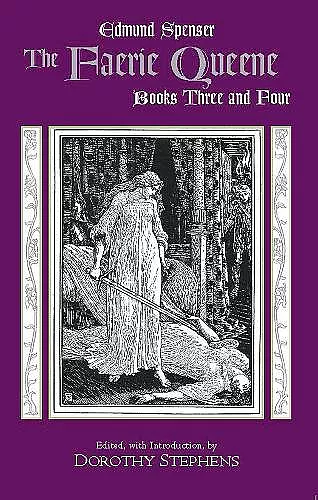The Faerie Queene, Books Three and Four
Edmund Spenser author Dorothy Stephens editor Abraham Stoll editor
Format:Paperback
Publisher:Hackett Publishing Co, Inc
Published:30th Nov '06
Should be back in stock very soon

These paired Arthurian legends suggest that erotic desire and the desire for companionship undergird national politics. The maiden Britomart, Queen Elizabeth's fictional ancestor, dons armor to search for a man whom she has seen in a crystal ball. While on this quest, she seeks to understand how one can be chaste while pursuing a sexual goal, in love with a man while passionately attached to a woman, a warrior princess yet a wife. As Spenser's most sensitively developed character, Britomart is capable of heroic deeds but also of teenage self-pity. Her experience is anatomized in the stories of other characters, where versions of love and friendship include physical gratification, torture, mutual aid, competition, spiritual ecstasy, self-sacrifice, genial teasing, jealousy, abduction, wise government, sedition, and the valiant defense of a pig shed.
Teachers of Spenser will also welcome two more installments of the Hackett editions of separate books of The Faerie Queene under the general editorship of Abraham Stoll, this time on books 2 and on books 3 and 4. In my view, these are the most attractive, inexpensive, but also comprehensive editions to date, with far better (and easy to read) notes on mythology and name symbolism (matters increasingly foreign to our undergraduates) than almost all previous versions. --Catherine Gimelli Martin, Studies in English Literature 1500-1900
In his introduction, Erik Gray offers a tidy preface to book 2 of The Faerie Queene, providing a brief but provocative discussion of some of Spenser's sources and poetic models. In his introductory subsections, Gray's analysis begins with more basic material and becomes progressively complex in sequential paragraphs, offering compelling points of departure for further study by readers at all levels. In addition, Gray offers a list of some later writers influenced by Spenser's writing, situating Spenser in the broader literary canon and defining some preliminary connections for students for many literary fields. To encourage the reader's further inquiry, Gray highlights a particularly troubling passage from book 2, offering various critical perspectives on the portrayal of Temperance therein, and grounding further interpretation. --Rachel E. Frier, Sixteenth Century Journal
ISBN: 9780872208551
Dimensions: unknown
Weight: 567g
496 pages